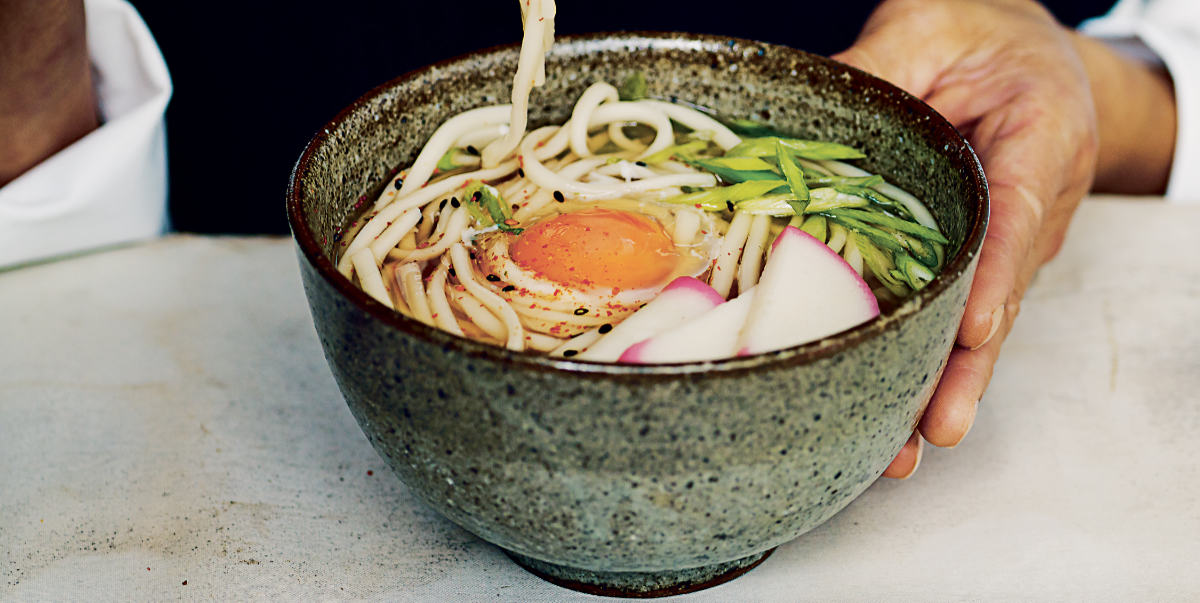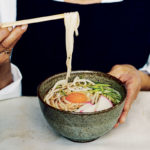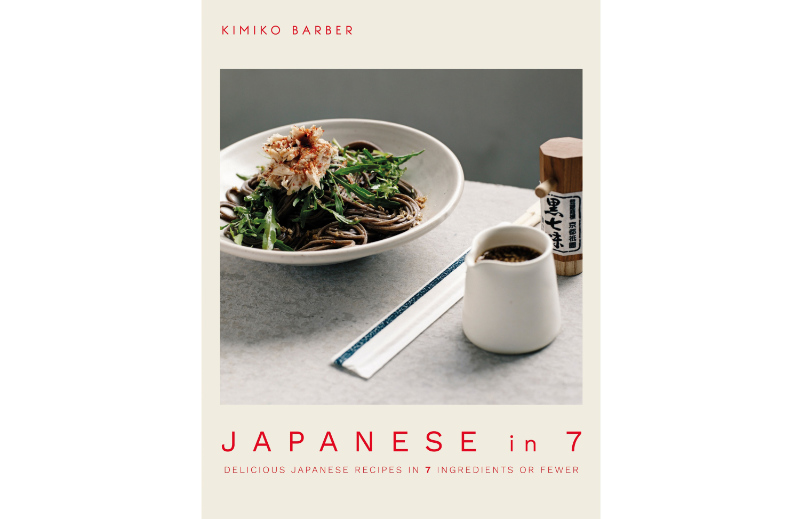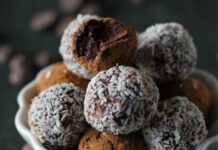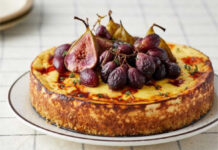Moon udon, takes its name from “tsukimi”, explains food writer Kimiko Barber, “which literally means ‘moon viewing’ in Japanese – a genteel pastime in autumn when the air is clear and the moon is full.
“Here, the whole yellow egg yolk in the centre is depicted as the full moon surrounded by semi-cooked egg white and noodles as clouds,” she adds. “Choose the freshest eggs you can find.”
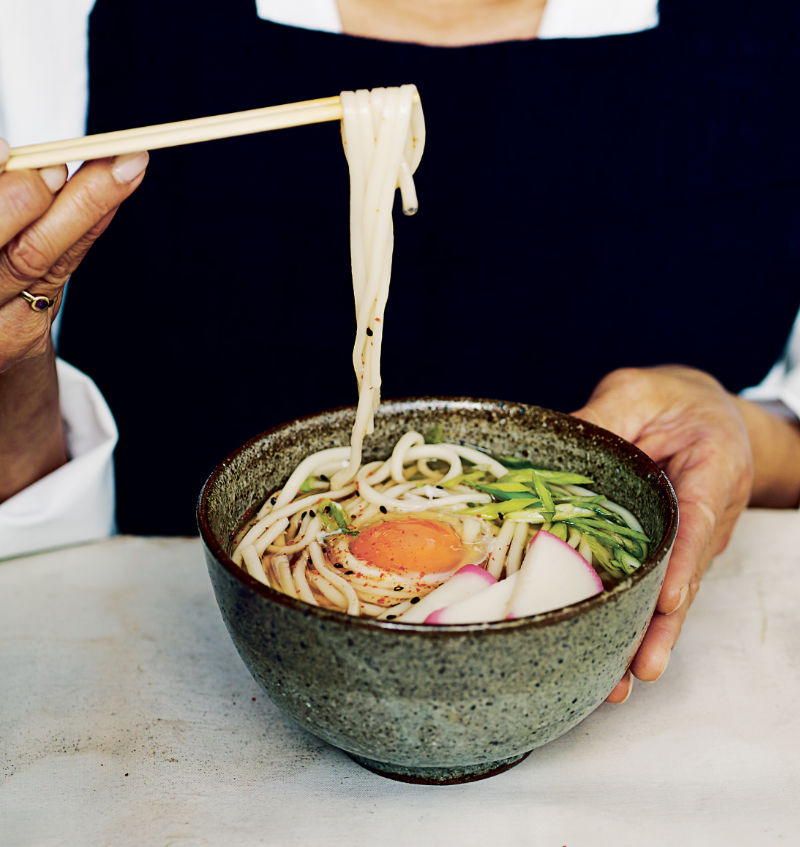
Moon udon receipe
Equipment
- 2 warmed bowls
- Saucepan
- Ladle
Ingredients
- 200 g dried udon noodles
- 300 ml all-purpose noodle sauce
- 2 tbsp mirin
- 4 slices kamaboko fish paste cake (optional)
- 2 eggs very fresh
- 1 spring onion finely chopped to garnish
- shichimi- tōgarashi (seven-spice chilli powder) to serve (optional)
Method
- Cook the noodles and portion between two warmed bowls. Keep warm. Preheating the bowls is particularly important for this recipe as you need all the retained heat to semi-cook the eggs.
- Meanwhile, heat the noodle sauce and mirin in a saucepan with 400ml of water to just below boiling. Pour half a ladleful of hot broth over each noodle mound and keep the rest on a simmer.
- If including kamaboko, arrange two slices at the side of the noodles. With the back of a ladle, make a hollowed nest in the centre of the noodles. Crack an egg and gently place the whole egg in the nest and ladle the remaining broth around it, then immediately cover each bowl with cling film to ‘poach’ the egg for one minute. The egg white should turn opaque white from the heat of the broth, but if you prefer the egg more cooked, microwave (800W) for 10–12 seconds.
- Remove the cling film, garnish with the chopped spring onion and a sprinkle of shichimi-tōgarashi, if liked, and serve immediately.
Nutrition
Japanese in 7 by Kimiko Barber, photography by Emma Lee, is published by Kyle Books.
Wise Living Magazine may receive a small commission to help support the running of this site from purchases made from links on this page. Affiliate links do not influence our editorial or articles published by Wise Living.























































